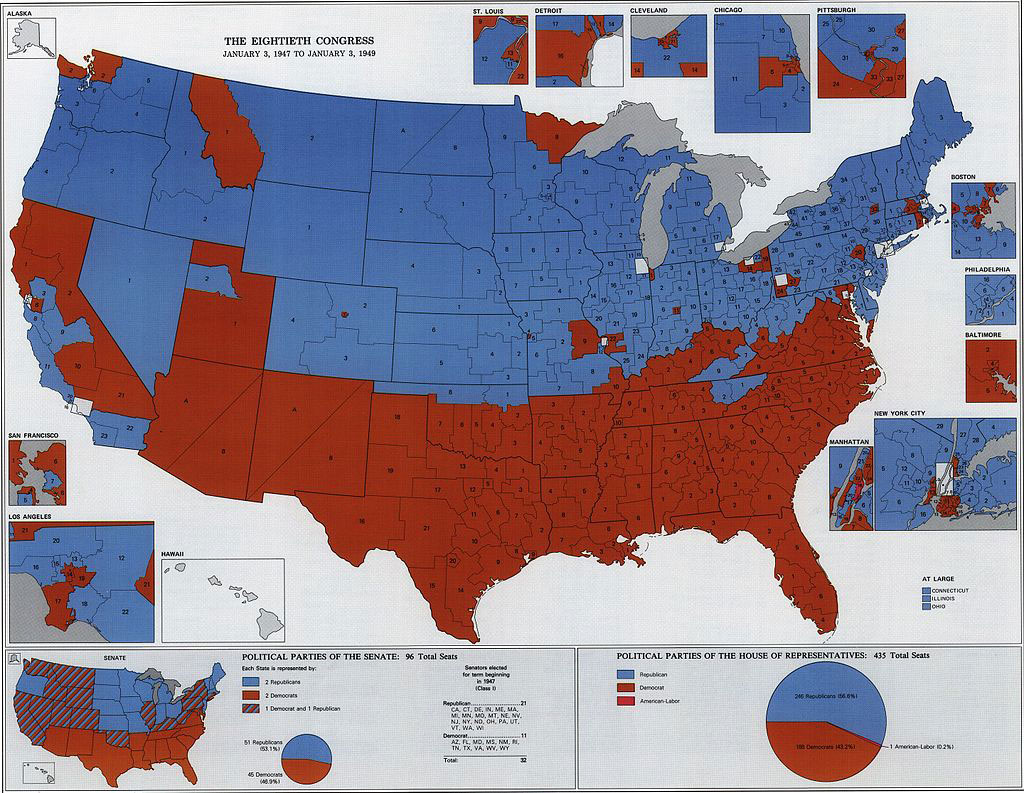Philip W. Porter
We mourn the passing of, but also celebrate the life of, Philip (Phil) Wayland Porter, a stalwart member of the University of Minnesota’s Department of Geography between 1958 and 2000. Phil died in Hanover, New Hampshire on April 24, 2024, just two miles from the place of his birth, surrounded by his family (predeceased by his lifelong life partner Patricia Garrigus Porter in December 2021).
Phil was born on July 9, 1928, in Hanover, the son of Wayland R. and Bertha (La Plante) Porter. He graduated from Kimball Union Academy in 1946, where his father taught mathematics and physics and his mother was a librarian. He then earned his A.B. in Geography at Middlebury College in 1950 (where he also was on the ski-jumping team), his M.A. at Syracuse University in 1955 (after two years in the U.S. Army, 1952-4), and his Ph.D. from the London School of Economics in 1956 (“Population Distribution and Land-use in Liberia”). He immediately joined the University of Minnesota department as an instructor, then assistant professor, advancing to associate professor in 1964 and professor in 1966. He chaired the Department of Geography (1969-71), directed the University’s Office of International Programs (1979-83), served on the National Academy of Sciences Committee on Space Programs for Earth Observations (1967-1971) and was a liaison officer for Midwest Universities Consortium for International Activities (1979-1983).
Phil’s first and enduring scholarly commitment was to understanding Indigenous agricultural practices in east Africa, undertaking career-long ethnographic fieldwork, initially with anthropologists, that began with Walter Goldschmidt’s Culture and Ecology in East Africa Project (1961-2). He taught at the University of Dar Es Salaam for two years (1971-73), overlapping with members of the influential The Dar es Salaam School of African History, introducing his daughters to rural African life through many trips in their Land Rover. This scholarship was summarized in two monographs: Food and Development in the Semi-arid Zone of East Africa (Syracuse: 1979) and Challenging Nature: Local Knowledge, Agroscience, and Food Security in Tanga Region, Tanzania (Chicago: 2006). In recognition, he received the inaugural Robert McC. Netting Award from the AAG Cultural and Political Ecology Specialty Group in 1999. His quiet but firm personal and intellectual support was vital for those students seeking to make a better world.
Phil’s interests in geography ranged far and wide. He was intrigued with John K. Wright and the geography of ideas. He was a passionate and innovative cartographer. Among his many published articles, he wrote on economic potentials, the point of minimum aggregate travel, the impact of climate on human activity, human ecology and agro-ecological modeling. During the last three decades of his career, he became particularly interested in critical development studies. This began with an AAG Resource Paper with Anthony de Souza, “The Underdevelopment and Modernization of the Third World” (AAG: 1974), was deepened through his annual undergraduate course on development, and culminated in the textbook A World of Difference (Guilford: 1998, 2008, with Eric Sheppard, Richa Nagar and David Faust). Former colleagues and advisors have described him as a “towering scholar”, “one of the most amazing polymaths and ‘renaissance men’ I’ve ever met”, “incredibly gracious”, and “genuinely curious rather than threatened by new ideas.”
Phil was a quietly reliable anchor of the department, with the capacity to talk with anyone and a puckish sense of humor. His students adored him, graduate and undergraduate alike, queueing outside his office to seek out his wisdom and bathe in his invariable support. He developed an innovative introductory course, in which students were asked to rotate the globe to a new north pole of their own choosing and tasked as teams to produce and rationalize an atlas reconstructing its human and physical geography of this hypothetical globe. The course on “Third World Underdevelopment and Modernization” was similarly made unforgettable by Phil’s extraordinary teaching style. David Faust, who had a chance to serve as a TA and co-instructor for this course, recalls:
“One day Phil would walk into the classroom and remark, ‘I want to show you something from one of my ancestors. Pay careful attention, because this is from one of your ancestors, too.’ He would hold out what appeared to be an ordinary rock. ‘This is a hand axe. You hold it like this. Try it.’ And he would pass it around. Another day he would enter the class carrying a rickety wooden turntable and a couple of bricks. He would ask for a volunteer to stand on the turntable, take a brick in each hand and be spun, extending their arms to make the spinning slow, and bringing them close to their chest to speed up the spinning, just as a figure skater does. This was to demonstrate conservation of angular momentum as part of a lesson about atmospheric circulation.”
Regents Professor Emeritus Eric Sheppard, lead author of this memorial, recalls:
“I first met Phil when I interviewed for the position at Minnesota in 1976. I had no idea who he was when I arrived; a young, overconfident quantitative turk. The only names familiar to me were Fred Lukermann, John Adams and Yifu Tuan, I was here to transform the department. Prior to my talk, the graduate students took me out for a liquid lunch at what was then Bulwinkles, after which I was put in the chair’s office to prep my presentation on geographic potentials (the topic of my Ph.D.). Idly leafing through old copies of the Annals, I was shocked & disconcerted to find a paper authored by Phil and Fred on … geographic potentials. Needless to say, this was a bit embarrassing. I managed to get through the talk with both Phil or Fred being nice enough not to mention their paper (which I had not read; my article on this topic also appeared in the Annals a couple of years later, after it had been rejected and my advisor had prevailed on the editor, John C. Hudson, to change his mind). In the end it was the department that transformed me, and Phil played a key role. I spent the last decade of my career doing the same kind of qualitative research that characterized his lifelong scholarship.”
Former Ph.D. advisee Richa Nagar notes: “Phil played a major role in molding me as a learner, an educator, and a human, and he taught me to better appreciate the unpredictable poetry of the world we live in.” She recalls a moving incident from Fall 1990:
“Phil’s class on ‘Geography of Africa’ inspired me to undertake a directed study with him on the history of Asian communities in East Africa. That same quarter, I also committed to a two-quarter long course sequence in ‘Historical Sociology’ with Ron Aminzade and Barbara Laslett, who required the students to study primary research documents during the second quarter. I came across an article with a footnote which stated that Robert Gregory, a retired professor at Syracuse University, had boxes full of interviews that his students had conducted with Asians in Kenya, Uganda, and Tanzania in the 1970s. I shared my wish with Phil in our directed study meeting, ‘I would’ve loved to examine those interviews for my Historical Sociology assignment.’ A week later I found a check from him in my department mailbox. It had a Post-it note: ‘Go book your plane ticket to Syracuse and read those interviews.’ I went to Phil in disbelief and asked why he had given me the check. He said, ‘I have some research money but your research is more important at this time. This is your Christmas present.’”
The annual Christmas parties, hosted by Phil and his wife Pat, were the major departmental social event of the year drawing almost everyone to feast and even sing carols, irrespective of their religious affiliations. His annual party invitations were also legendary; each year he would pick a letter of the alphabet, plumb his well-thumbed dictionary, and write a page-long invite using words only beginning with that letter.
Phil’s other abiding passion was music, particularly choral music by J.S. Bach. He regularly sang and performed with Pat, organist and choir director at Minneapolis’ First Congregational Church (1957-1971) and then Grace University Lutheran Church (1976-2000). In choirs, the other basses competed to sit nearby so that they could rely on his ability to read music and sing the right notes. After retirement, Phil and Pat returned to New Hampshire, where their lives alternated between scholarly senior living near Dartmouth College, and summers in the sprawling family cottage on Lake Sunapee. He is survived by three daughters, Janet E. Holmén, Sara L. Porter, and Alice C. Porter, as well as five grandchildren and two great grandchildren.
This memorial was contributed by Eric Sheppard, Richa Nagar, and Abdi Samatar on behalf of the Department of Geography, Environment, & Society, University of Minnesota.
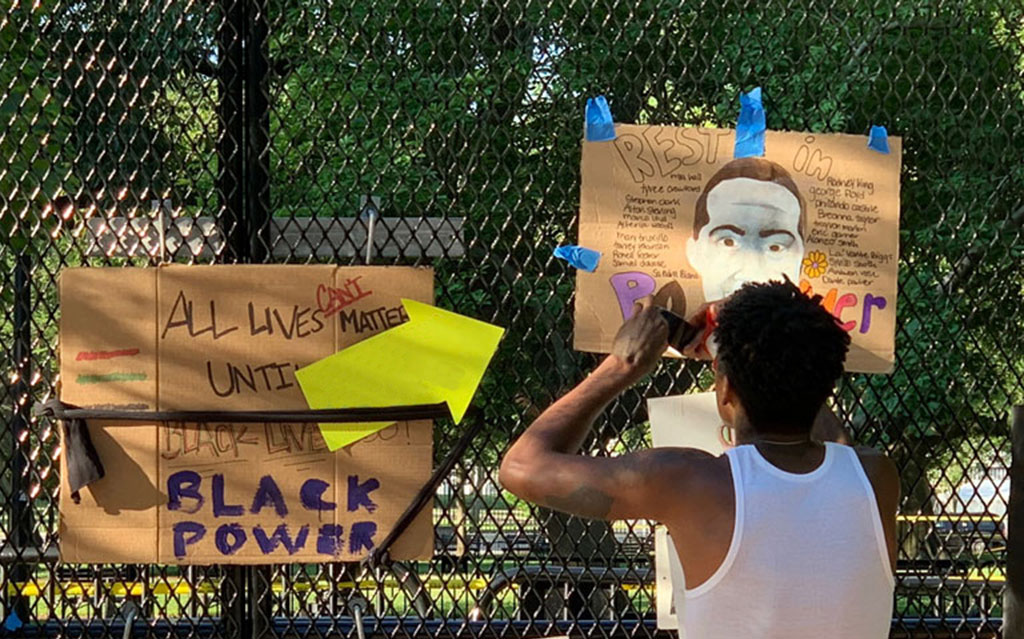
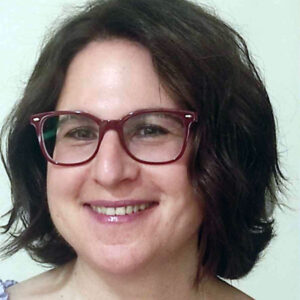 In January 2024, the AAG welcomes Anastasia Christou as the new
In January 2024, the AAG welcomes Anastasia Christou as the new 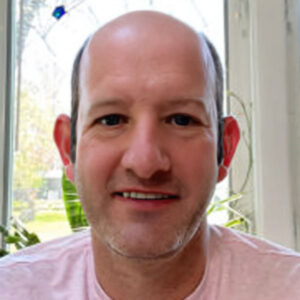 Inwood is a professor in the Department of Geography and The Rock Ethics Institute at the Pennsylvania State University. His research and teaching are focused on the social, political, and economic structures that perpetuate exploitation and injustice with a specific focus on the US South. His work explores racial capitalism and the broad trajectories of white supremacy. In addition, his work has engaged with the U.S. civil rights struggle and a broad understanding of the geography of the American Civil Rights struggle. His work has been funded by the National Science Foundation and his work has been recognized with several AAG honors including the Glenda Laws Award and the AAG’s media achievement award. He has authored or co-authored over fifty peer-reviewed journal articles and is co-editor of the volume Non-Killing Geographies: Violence, Space, and the Search for a More Humane Geography (Center for Global Non-Killing, 2011) and has a forthcoming co-edited book on Geographies of Justice (Bristol University Press 2024). He brings to his editorship at GeoHumanities an awareness of the intersection of geography, humanist value systems and human rights, politics, and history.
Inwood is a professor in the Department of Geography and The Rock Ethics Institute at the Pennsylvania State University. His research and teaching are focused on the social, political, and economic structures that perpetuate exploitation and injustice with a specific focus on the US South. His work explores racial capitalism and the broad trajectories of white supremacy. In addition, his work has engaged with the U.S. civil rights struggle and a broad understanding of the geography of the American Civil Rights struggle. His work has been funded by the National Science Foundation and his work has been recognized with several AAG honors including the Glenda Laws Award and the AAG’s media achievement award. He has authored or co-authored over fifty peer-reviewed journal articles and is co-editor of the volume Non-Killing Geographies: Violence, Space, and the Search for a More Humane Geography (Center for Global Non-Killing, 2011) and has a forthcoming co-edited book on Geographies of Justice (Bristol University Press 2024). He brings to his editorship at GeoHumanities an awareness of the intersection of geography, humanist value systems and human rights, politics, and history.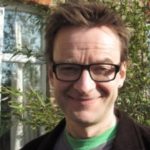 Cresswell is Ogilvie Professor of Human Geography in the School of GeoSciences at the University of Edinburgh. His research focuses on geographies of place and mobility and their role in the constitution of social and cultural life. He is the author or editor of a dozen books and over 100 articles on the role of space, place, and mobility in social and cultural life. Cresswell is also a widely published poet with three collections – most recently Plastiglomerate (Penned in the Margins, 2020). His most recent academic book, Muybridge and Mobility (co-authored with John Ott) was published by the University of California Press in 2022.
Cresswell is Ogilvie Professor of Human Geography in the School of GeoSciences at the University of Edinburgh. His research focuses on geographies of place and mobility and their role in the constitution of social and cultural life. He is the author or editor of a dozen books and over 100 articles on the role of space, place, and mobility in social and cultural life. Cresswell is also a widely published poet with three collections – most recently Plastiglomerate (Penned in the Margins, 2020). His most recent academic book, Muybridge and Mobility (co-authored with John Ott) was published by the University of California Press in 2022. 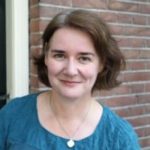 Deborah Dixon is Professor of Geography at the University of Glasgow. Dixon’s internationally recognized work in feminist geopolitics was instrumental to the emergence of geohumanities as an inter-disciplinary field of research and practice. Her work cuts across scientific, artistic, and cultural categories to examine and imagine the ecological and social presence and futures of landscapes and places. Her collaborations include
Deborah Dixon is Professor of Geography at the University of Glasgow. Dixon’s internationally recognized work in feminist geopolitics was instrumental to the emergence of geohumanities as an inter-disciplinary field of research and practice. Her work cuts across scientific, artistic, and cultural categories to examine and imagine the ecological and social presence and futures of landscapes and places. Her collaborations include 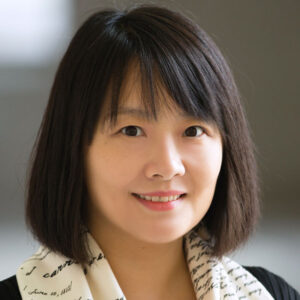 Guo Chen has been named the first Human Geography/Nature and Society editor for The Professional Geographer, inaugurating a new position at the journal. Chen will join current editor Heejun Chang, who will continue in his second term as editor, focusing on articles related to Geographic Methods/Physical Geography, Earth and Environmental Sciences.
Guo Chen has been named the first Human Geography/Nature and Society editor for The Professional Geographer, inaugurating a new position at the journal. Chen will join current editor Heejun Chang, who will continue in his second term as editor, focusing on articles related to Geographic Methods/Physical Geography, Earth and Environmental Sciences.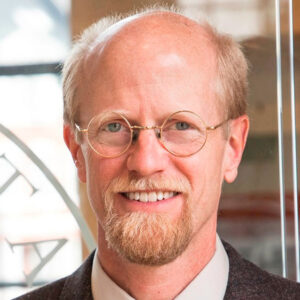 Adams is the longtime director of the Urban Studies Program at the University of Texas, first in the UT Department of Geography and the Environment now in the Department of American Studies. His service to AAG includes founding the Media Geography Specialty Group (now Media and Communication). From 2015 to 2020, he served as associate professor II at the University of Bergen, funded by the Research Council of Norway. In 2001, he was a Fulbright fellow at McGill University and University of Montreal, Quebec. His current research focuses on sociospatial and political aspects of digital media, digital humanities, and culturally specific understandings of environmental risk and climate change.
Adams is the longtime director of the Urban Studies Program at the University of Texas, first in the UT Department of Geography and the Environment now in the Department of American Studies. His service to AAG includes founding the Media Geography Specialty Group (now Media and Communication). From 2015 to 2020, he served as associate professor II at the University of Bergen, funded by the Research Council of Norway. In 2001, he was a Fulbright fellow at McGill University and University of Montreal, Quebec. His current research focuses on sociospatial and political aspects of digital media, digital humanities, and culturally specific understandings of environmental risk and climate change.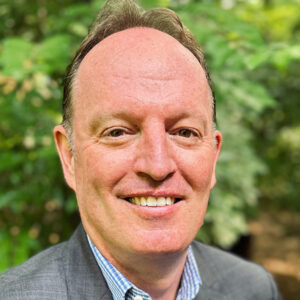 King is professor and head of the Department of Geography at the Pennsylvania State University. His affiliations range across the university, as a faculty research associate with the Population Research Institute, research affiliate with the Earth and Environmental Systems Institute, and faculty affiliate with the School of International Affairs and Consortium on Substance Use and Addiction. King is an honorary research associate with the African Climate and Development Initiative at the University of Cape Town and was selected as a National Academy of Sciences Kavli Fellow in 2017. He previously served from 2021 to 2023 as co-editor of Human Geography and Nature & Society for the Annals. King’s research, teaching, and outreach focuses on livelihoods, conservation and development, environmental change, and human health, centering in Southern Africa. King’s laboratory group (HELIX: Health and Environment Landscapes for Interdisciplinary eXchange) is examining how COVID-19 is transforming the US opioid epidemic. His book, States of Disease: Political Environments and Human Health University of California Press, 2017), received the Julian Minghi Distinguished Book Award.
King is professor and head of the Department of Geography at the Pennsylvania State University. His affiliations range across the university, as a faculty research associate with the Population Research Institute, research affiliate with the Earth and Environmental Systems Institute, and faculty affiliate with the School of International Affairs and Consortium on Substance Use and Addiction. King is an honorary research associate with the African Climate and Development Initiative at the University of Cape Town and was selected as a National Academy of Sciences Kavli Fellow in 2017. He previously served from 2021 to 2023 as co-editor of Human Geography and Nature & Society for the Annals. King’s research, teaching, and outreach focuses on livelihoods, conservation and development, environmental change, and human health, centering in Southern Africa. King’s laboratory group (HELIX: Health and Environment Landscapes for Interdisciplinary eXchange) is examining how COVID-19 is transforming the US opioid epidemic. His book, States of Disease: Political Environments and Human Health University of California Press, 2017), received the Julian Minghi Distinguished Book Award. Strauss brought to the role of editor their significant publications in economic and labor geographies, feminist theory, migration studies, legal geographies, environmental change, urban political ecology, and critical urban theory. With extensive publications in geography, social science, and law journals, Strauss has also served on six editorial boards and been a reviewer for many papers in and beyond geography. Strauss’s tenure with the Annals was characterized by encouragement of paper submissions from outside of North America and in diverse topics areas “that still evidence a commitment to engagement with geography and geographical debate.”
Strauss brought to the role of editor their significant publications in economic and labor geographies, feminist theory, migration studies, legal geographies, environmental change, urban political ecology, and critical urban theory. With extensive publications in geography, social science, and law journals, Strauss has also served on six editorial boards and been a reviewer for many papers in and beyond geography. Strauss’s tenure with the Annals was characterized by encouragement of paper submissions from outside of North America and in diverse topics areas “that still evidence a commitment to engagement with geography and geographical debate.” Meehan is a broadly trained human-environment geographer with expertise in urban political ecology, environmental justice, water policy, mixed methods, and science and technology studies. She is co-author of Water: A Critical Introduction (Wiley, 2023), with Naho Mirumachi, Alex Loftus, and Majed Akhter. She is co-editor with Kendra Strauss of Precarious Worlds: Contested Geographies of Social Reproduction (University of Georgia Press, 2015). In 2023 she won the European Research Council’s Consolidator Grant award to support her research on household water insecurity and water shutoffs in high-income countries. During her time at the Annals, Meehan sought to democratize knowledge and expand the audiences for the journal, beyond the geography discipline and beyond academia. She encouraged the use of Annals as a platform for key debates in the discipline and worked with the other editors to bring human-environment topics into the foreground, especially work that focused on racialized natures and environmental justice. “I have been thrilled to work with the editorial board, my co-editors, AAG staff, and the AAG Council to shepherd the very best geographic scholarship to the pages of the Annals,” Meehan says.
Meehan is a broadly trained human-environment geographer with expertise in urban political ecology, environmental justice, water policy, mixed methods, and science and technology studies. She is co-author of Water: A Critical Introduction (Wiley, 2023), with Naho Mirumachi, Alex Loftus, and Majed Akhter. She is co-editor with Kendra Strauss of Precarious Worlds: Contested Geographies of Social Reproduction (University of Georgia Press, 2015). In 2023 she won the European Research Council’s Consolidator Grant award to support her research on household water insecurity and water shutoffs in high-income countries. During her time at the Annals, Meehan sought to democratize knowledge and expand the audiences for the journal, beyond the geography discipline and beyond academia. She encouraged the use of Annals as a platform for key debates in the discipline and worked with the other editors to bring human-environment topics into the foreground, especially work that focused on racialized natures and environmental justice. “I have been thrilled to work with the editorial board, my co-editors, AAG staff, and the AAG Council to shepherd the very best geographic scholarship to the pages of the Annals,” Meehan says.